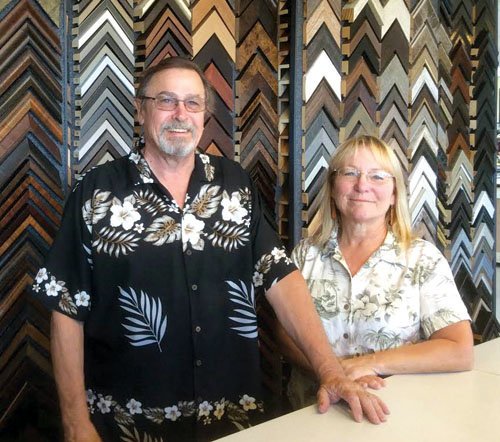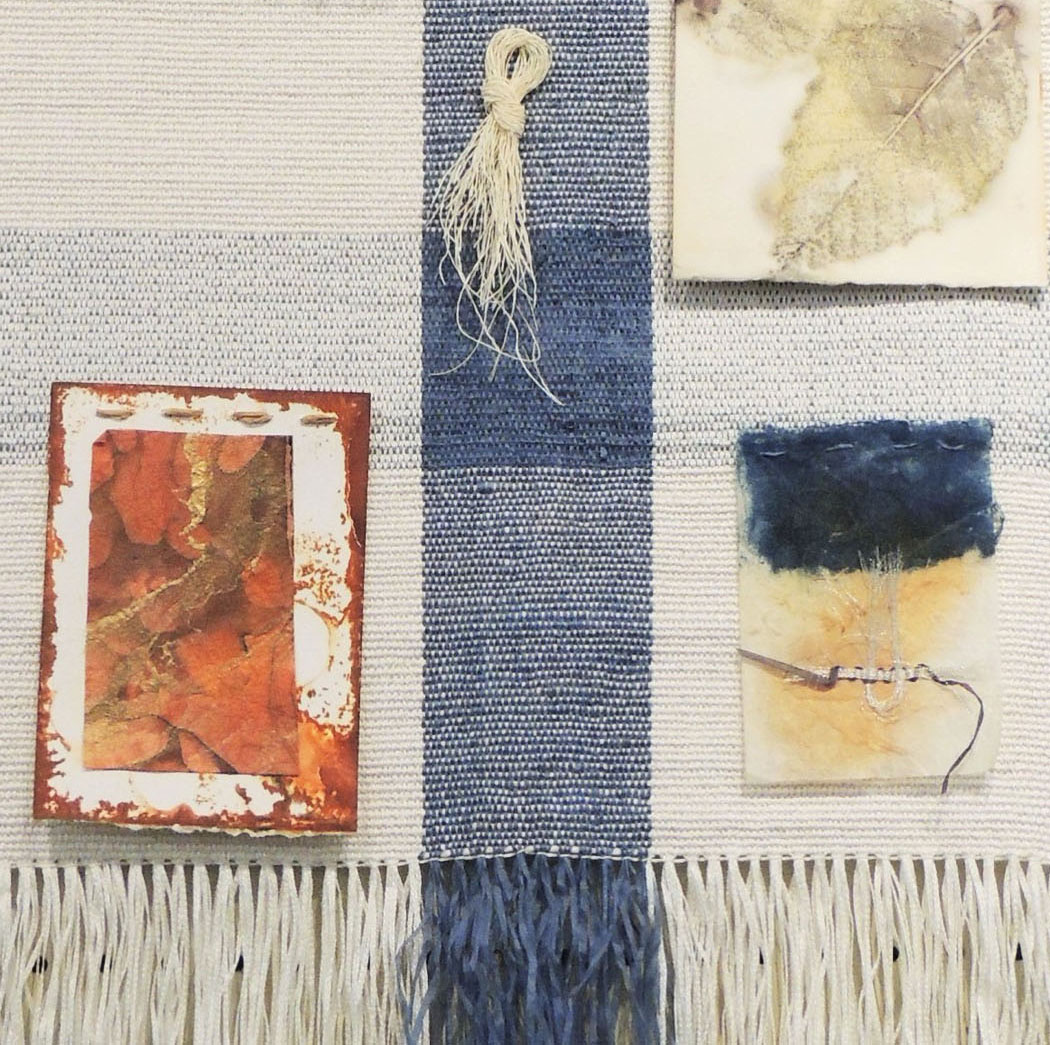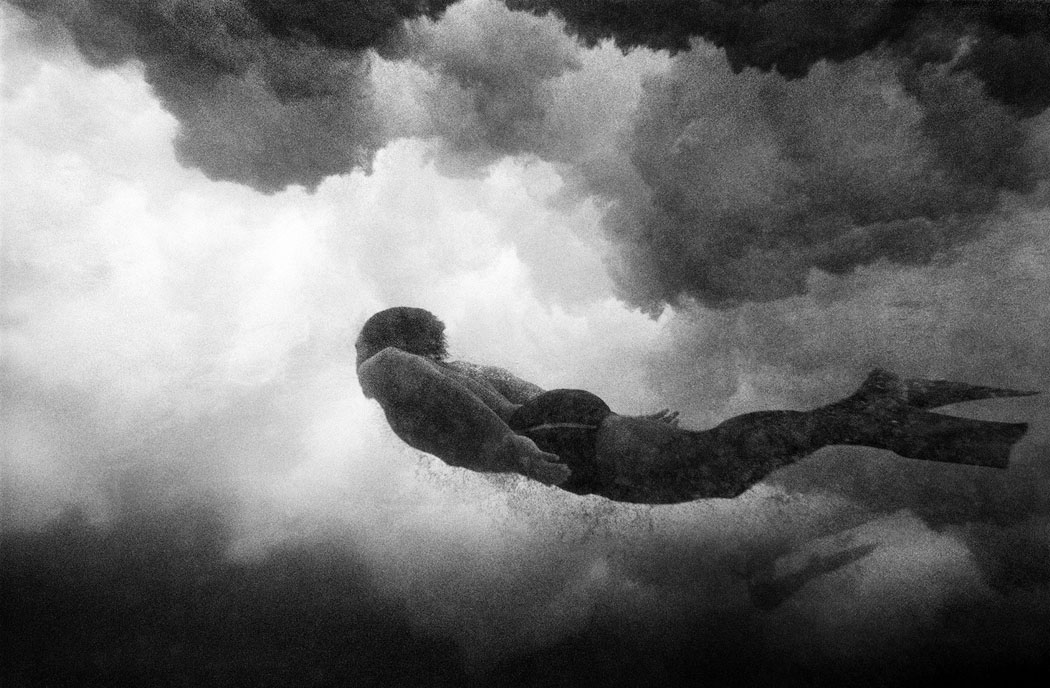
Peer through the Lens of Photographer Wayne Levin

By Fern Gavelek
Award-winning photographer Wayne Levin has exhibited images in galleries around the globe. You can see his work in New York’s Museum of Modern Art and the Dimbola Museum and Galleries in England.
His photos have appeared in a host of national publications—Harper’s, Conde Nast Traveler, Outside Magazine—and have been the subject of several books capturing life above and below the ocean’s surface. Wayne chronicled the challenges of Hansen’s Disease patients on Moloka‘i and documented the restoration of Kaho‘olawe; the former project was published as two books and exhibited statewide, while the latter was displayed at the Smithsonian and earned Wayne one of two Hawai‘i Book of the Year Awards.
The Hōnaunau resident is best known for his black-and-white underwater work. Wayne says 80 percent of his photography is in black-and-white format, as he’s “better at it.” He likes the nuances of contrast and tones when working with black, white, and gray.
Seeing the World through a Rectangle
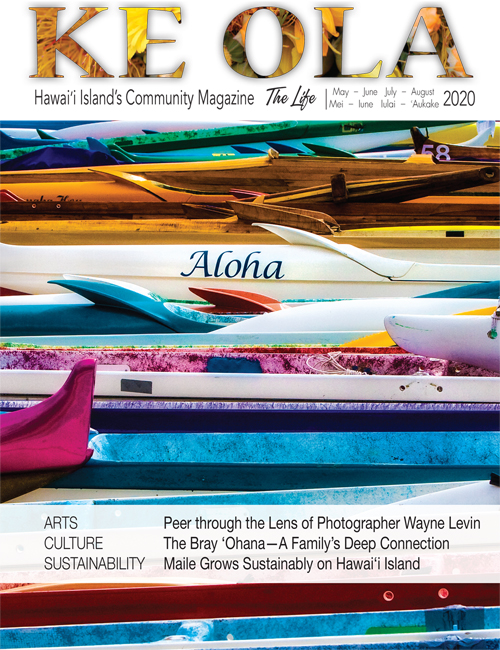
Wayne “got hooked” on photography as a 12 year old, long before digital cameras and iPhones. He was gifted with a Kodak Brownie camera and do-it-yourself negative developing kit. Looking through a camera’s viewfinder was second nature to the youth after previously seeing the countryside during train trips with his grandmother.
“I loved those trips, looking at the world through the rectangular shape of the train window,” Wayne recalls. “I was imposing a rectangular look at the world.”
As a teen living in Los Angeles, Wayne took his camera along on family road trips, often shooting from the backseat car window. He developed his film before sending it to a lab for prints. Subjects included scenery at national parks, the family’s racing sailboat, and “big, beautiful yachts.”
“I shot landscapes and scenics and I’m amazed how much of it involved water: oceans, streams, and lakes—water reflections too,” he adds. “My earliest memory of a photograph was during a one-day trip to Mexico where I captured these pastel-colored tombstones. They fascinated me.”
After graduating from high school in 1962, Wayne studied his craft at the Brooks Institute of Photography in Santa Barbara. While he served in the Navy, Wayne’s family moved to Hawai‘i. He joined them in 1968, upon his discharge. His interest in travel and photography led him to take a trip around the world, sailing through the South Pacific and traveling over land through Asia and Europe. He took photos in both color and black and white.
Photography as an Occupation
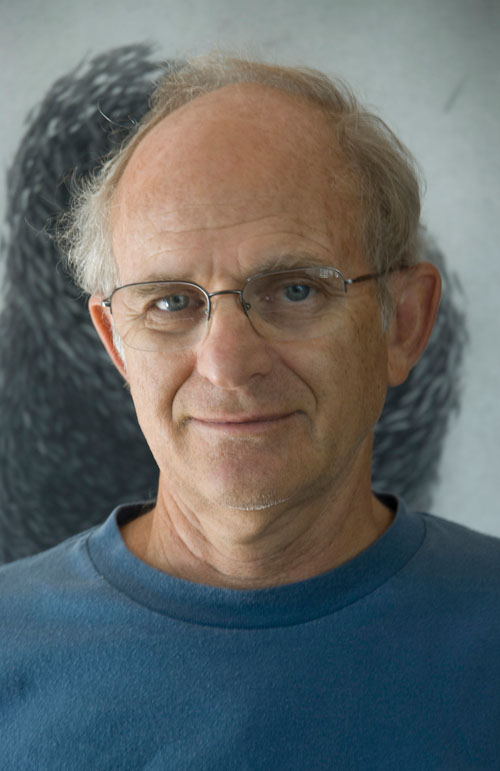
Images documenting Wayne’s travels became the basis for his first solo exhibitions in Honolulu in 1970. He also worked as an assistant for renowned Hawai‘i photographer Robert Wenkham and architectural photographer Augie Salbosa.
After opening his own commercial photography business on O‘ahu in 1973, Wayne “took whatever work he could get,” busying himself with weddings, portraits, and darkroom developing for others. He recalls being hired by the Damon family to document the archeological sites in Moanalua Valley, which he says, “nixed the H3 freeway from going through it.”
Wayne got interested in photography as an art form and decided to continue his education, earning fine art degrees at the San Francisco Art Institute and Pratt Institute in New York. He moved back to the Aloha State in 1983 to teach photography at the University of Hawai‘i, Mānoa, and purchased his first 35mm Nikonos underwater camera as a coming home gift to himself. He began an underwater study of surfers.
“I wanted to photograph surfers from below, rather than above, the surface,” explains Wayne, who got the idea while watching surf movies. “I thought the vantage was interesting from below the action. I wanted to shoot the bottom of the surfboard and the wave churning by as seen from below the surface.”
Wayne first did these shots in color, but only got blue tones and murky water. “I switched to black and white as I could increase the contrast and have more control of the tonality of the picture.”
Shooting Black and White
The photographer also thought shooting bodysurfers was more interesting in the black and white format. “You could see more of them under water and it looked like they were diving under storm clouds,” Wayne details. “In color, the viewer knew it was water and ocean but with black and white the view is more ambivalent…it could have been people flying through the sky. Black and white made the work come to life; it was more abstract and there was a question of what you’re looking at.”
In addition, Wayne created drama with his black and white photo printing in the darkroom. For example, he could lighten a too-dark face by using a dodging tool which lessens the light released from the enlarger onto the photographic print paper. Like the renowned photographer Ansel Adams, with whose work Wayne’s was exhibited with at the Mumm Fine Art Photography Gallery in Napa, Califormia in 2017, Wayne also used filters.
“If you look at Ansel Adams’ pictures, he would darken skies using filters,” notes Wayne. “I used filters too, but not as dramatically. I did it more subtly.”
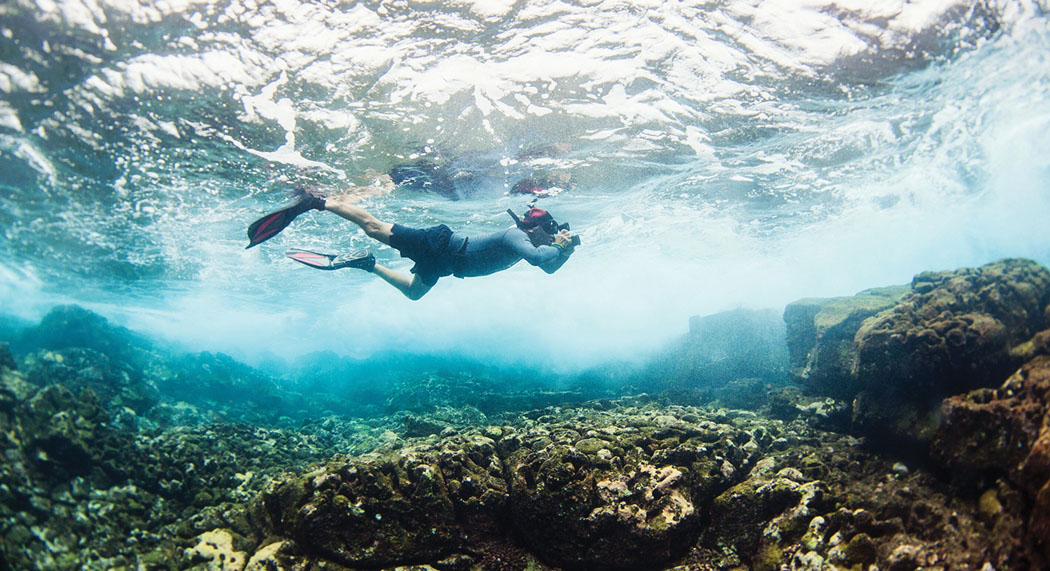
Capturing Kona’s Marine Life
In 1990, Wayne moved to Kona. A friend suggested he photograph dolphins at Kealakekua Bay. This experience endeared him to capturing Kona’s marine life while scuba and free diving. Wayne recalls coming upon what he thought was a large coral head—until he saw movement—and discovered it was a massive ball of moving fish. Mesmerized, Wayne then spent two decades photographing fish schools, especially akule (big-eyed scad) and ‘ōpelu (mackerel scad).
“I thought these schools were an interesting subject as they made incredible shapes,” Wayne explains. The photographer said the more he photographed them, the more he realized the whole school “acted like an individual and each fish is like a cell within a larger being.” He found the idea intriguing.
Wayne continues, “It made me question what does this say about all life in general and humanity? Are we all connected or do we just end at our skin?”
Considered both interesting and captivating, Wayne’s akule images were displayed at the National Academy of Sciences in Washington, DC and selected DC’s Best Photography Exhibit in 2015.
Underwater Photography Challenges

Today, Wayne is still shooting film photography using Nikonos underwater cameras, though they are no longer being made. He prefers the brand as they are compact, don’t require the use of an underwater case, and have good optics. He doesn’t use flash shooting black-and-white. Wayneʻs challenges using a film camera is he is limited to taking 36 photos before he has to surface and carefully reload a new roll without getting water into the camera. Sometimes he brings an extra camera along and an assistant to optimize use of his four Nikonos cameras.
“I could do a book on all the incredible shots I could have taken but I ran out of film,” he laughs. One time the photographer got lucky. When scuba diving in Hōnaunau in 2015 to document coral bleaching, Wayne saw a huge school of ‘ōpelu but was out of film. He surfaced, called his wife at home to bring him another scuba tank, camera, and two rolls of film. She arrived 30 minutes later, he went back down and found that school of fish. He got his photos! “That was unusual as ‘ōpelu move fast,” he adds.
After shooting more than 60 years, Wayne says his favorite subjects are fish schools, people doing water activities—surfers, canoe paddlers, divers, and swimmers—plus reflections off windows and water in all of its forms. As far as locations, he favors Kona’s Kua Bay, where he shoots āholehole (endemic Hawaiian fish) schools and waves. “For some reason, you can have nice, mid-size waves and the water is still really clear there—that doesnʻt usually happen,” he emphasizes.
New Projects

What’s next for Wayne? As of this writing, heʻs headed to the US-Mexican border to shoot where the border fence extends 50 feet into the ocean.
“This project is a change for me; I have no pre-concepts,” Wayne muses. “Itʻs a border of contrasts as the Mexican side of the fence is a gathering place with murals and graffiti while the American side has a kind of desolate beauty, but with a lot of warning signs.” Wayne will be shooting above water with a 35mm digital Nikon.
“I plan to return later though and photograph whatʻs going on underwater too,” he says. ❖
Wayneʻs Tips for Shooting Underwater Snapshots
- Pick up a disposable underwater film camera—all have color film—or an inexpensive underwater digital camera.
- Stay close to the surface or use a flash. Light is especially needed to capture yellows, oranges, and red. Greens filter out deeper.
- Try to shoot when sunny out and the sun’s rays are penetrating into the water. Best is from 10am–2pm for best light and clarity.
- The amount of water (distance) between the camera and subject matters. Anything more than 10 feet is like shooting through a veil of blue. Be as close as possible.
For more information: waynelevinimages.com
